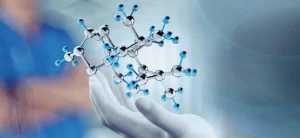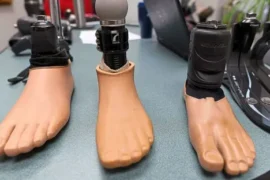Introduction
has emerged as a revolutionary field in the realm of science and medicine. Its ability to manipulate matter at an atomic or molecular scale opens up unprecedented possibilities in health care. From targeted drug delivery systems to advanced diagnostic techniques, nano technology is transforming how we approach treatment and patient care. This blog post will explore how to incorporate and implement nano technology in health care, highlighting its benefits, current applications, future prospects, and the challenges it faces.

1. Understanding Nano Technology and Its Relevance to Health Care
What is Nano Technology?
Nano technology involves the manipulation and control of matter at the nanometer scale, typically between 1 and 100 nanometers. At this scale, materials exhibit unique physical, chemical, and biological properties that differ significantly from their larger-scale counterparts. These properties can be harnessed for various applications, including in health care.
Relevance to Health Care
The unique properties of nano technology make it particularly suitable for health care applications. For instance, nanoparticles can be engineered to interact specifically with certain cells or tissues, enabling targeted drug delivery. Similarly, nano-sized sensors can detect biomolecules at very low concentrations, improving the sensitivity of diagnostic tests. By integrating nano technology into health care, we can enhance the precision, efficiency, and effectiveness of medical treatments and diagnostics.
2. Applications of Nano Technology in Health Care
Drug Delivery Systems
One of the most promising applications of nano technology in health care is in the development of advanced drug delivery systems. Nano carriers, such as liposomes, dendrimers, and polymeric nanoparticles, can encapsulate drugs and deliver them directly to the targeted cells or tissues. This targeted delivery reduces the side effects associated with conventional drug administration and improves therapeutic outcomes. For example, nano technology is being used to develop cancer treatments that specifically target tumor cells while sparing healthy tissues.
Diagnostic Techniques
Nano technology is also revolutionizing diagnostic techniques. Nano sensors and nano probes can detect disease markers at the molecular level, allowing for early diagnosis and more accurate monitoring of disease progression. Quantum dots, for instance, are fluorescent nanoparticles that can be used in imaging to track the movement of cells and molecules within the body. These advancements in nano technology are enabling more precise and less invasive diagnostic procedures.
Regenerative Medicine
In regenerative medicine, nano technology plays a crucial role in tissue engineering and the development of artificial organs. Nano scaffolds made from biocompatible materials provide a framework for cell growth and tissue regeneration. These scaffolds can be designed to mimic the natural extracellular matrix, promoting the formation of functional tissues. Additionally, nano technology is being used to create biomimetic materials that can interact with biological systems in a controlled manner, further advancing the field of regenerative medicine.
3. Future Prospects of Nano Technology in Health Care
Personalized Medicine
One of the future prospects of nano technology in health care is the advancement of personalized medicine. By leveraging the unique properties of nanoparticles, we can develop customized treatments based on an individual’s genetic profile and specific health conditions. This approach aims to improve treatment efficacy and reduce adverse effects by tailoring therapies to the unique characteristics of each patient. Nano technology also enables the development of personalized diagnostic tools that can provide real-time monitoring of a patient’s health status.
Nanorobots and Surgery
Nanorobots are another exciting prospect for the future of health care. These tiny machines, designed at the nanoscale, can perform tasks within the human body with high precision. For example, nanorobots could be used in minimally invasive surgeries to remove obstructions in blood vessels or to deliver therapeutic agents directly to diseased tissues. The development of nanorobots holds the potential to revolutionize surgical procedures, making them less invasive and more effective.
Smart Drug Delivery Systems
The future of drug delivery systems lies in the development of smart nanoparticles that can respond to specific stimuli within the body. These stimuli-responsive nanoparticles can release their therapeutic payload in response to changes in pH, temperature, or the presence of certain biomolecules. This smart delivery system ensures that drugs are released only when and where they are needed, enhancing treatment efficacy and minimizing side effects.
4. Challenges and Ethical Considerations
Technical Challenges
Despite its promising potential, the implementation of nano technology in health care faces several technical challenges. One major challenge is the precise control over the size, shape, and surface properties of nanoparticles. These parameters significantly influence the behavior of nanoparticles in biological systems, and any variation can impact their efficacy and safety. Additionally, the scalability of nano technology-based products from the laboratory to clinical settings remains a significant hurdle.
Regulatory and Safety Issues
The regulatory landscape for nano technology in health care is still evolving. Ensuring the safety and efficacy of nano technology-based products requires comprehensive testing and evaluation. Regulatory agencies need to establish clear guidelines and standards for the development and use of these products. There are also concerns about the long-term effects of nanoparticles on human health and the environment, which require thorough investigation.
Ethical Considerations
The ethical implications of nano technology in health care cannot be overlooked. Issues such as patient consent, privacy, and the potential for unequal access to advanced treatments need to be addressed. It is essential to engage with stakeholders, including patients, healthcare providers, and policymakers, to ensure that the development and implementation of nano technology are guided by ethical principles and societal values.
Conclusion
Nano technology holds immense potential to revolutionize health care by offering innovative solutions for drug delivery, diagnostics, and regenerative medicine. While the field is still in its nascent stages, the future prospects are promising, with personalized medicine, nanorobots, and smart drug delivery systems on the horizon. However, it is crucial to address the technical, regulatory, and ethical challenges to ensure the safe and equitable integration of nano technology in health care. As we continue to explore the possibilities of nano technology, it is essential to engage in open dialogue and collaboration among scientists, healthcare professionals, policymakers, and the public.
Invitation to Comment
What are your thoughts on the incorporation of nano technology in health care? Do you have any questions or insights on the topic? Feel free to leave a comment below and join the conversation!





